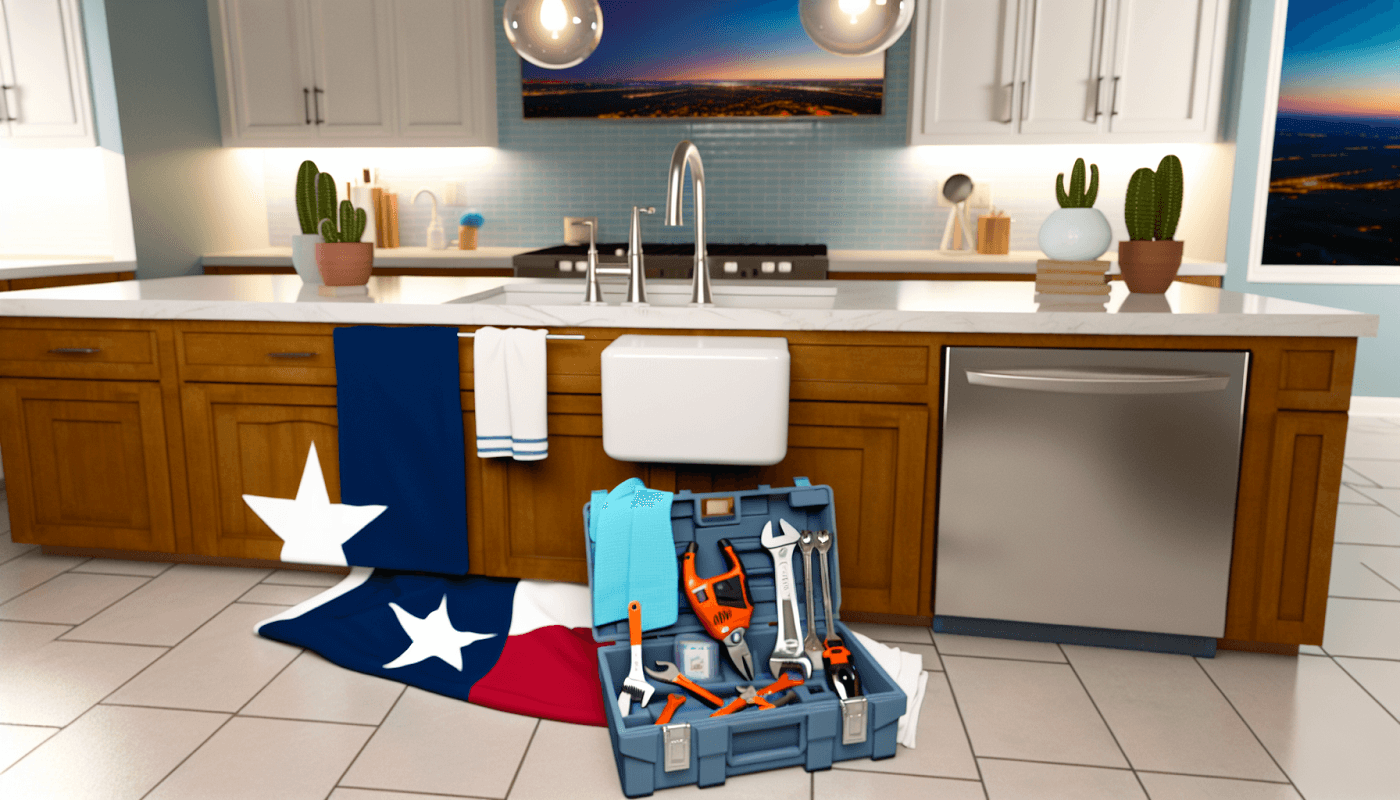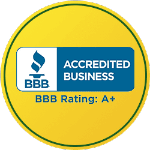
Dealing with a clogged kitchen sink can be a hassle, but with a few simple steps, you can often fix the problem on your own. This guide will guide you through unclogging your kitchen sink, so you can return to your daily routine without hiring a professional.
Common Causes of a Clogged Kitchen Sink
Knowing what causes a clogged sink can help you stop future clogs. Here are some typical causes:
- Food Particles: Small bits of food can accumulate in the pipes, especially if you don’t have a garbage disposal.
- Grease and Oil: Grease and oil can solidify in the pipes, leading to blockages over time.
- Soap Scum: Soap residue can build up, particularly if you use bar soap.
- Foreign Objects: Items like utensils or small kitchen gadgets can accidentally fall into the sink and cause clogs.
How to Unclog Your Kitchen Sink
Before you start, get these tools:
- Plunger
- Plumbing snake
- Baking soda and vinegar
- Bucket
- Wrench
Follow these steps to unclog your kitchen sink:
- Boiling Water: Pour a pot of boiling water down the drain. This can help dissolve minor clogs caused by grease or soap scum.
- Plunger: Place the plunger over the drain and push down firmly. Pump the plunger several times to create suction and dislodge the clog.
- Baking Soda and Vinegar: Pour a cup of baking soda down the drain, followed by a cup of vinegar. Let it sit for 15-20 minutes, then flush with hot water.
- Plumbing Snake: If the clog persists, use a plumbing snake. Insert the snake into the drain and turn the handle to break up the blockage.
- Clean the P-Trap: Place a bucket under the sink to catch any water. Use a wrench to loosen the nuts on the P-trap, then remove it and clean out any debris.
If these steps don’t resolve the issue, it may be time to call a professional plumber. Hobson AC offers reliable plumbing services to help you with any stubborn clogs.
Tools and Materials You’ll Need
Before you start unclogging your kitchen sink, get the tools and materials you need. Having everything ready will make the process easier and faster.
- Plunger: A basic tool for dislodging clogs with suction power.
- Plumbing Snake: Also known as an auger, this tool can reach deeper clogs that a plunger can’t.
- Baking Soda and Vinegar: A natural solution for breaking down clogs and deodorizing your drain.
- Bucket: Useful for catching water and debris when you need to remove the P-trap.
- Wrench: Needed for loosening and tightening pipe connections.
- Rubber Gloves: To protect your hands from grime and chemicals.
- Flashlight: Helpful for seeing into dark pipes and under the sink.
Using a Plunger
One of the simplest and most effective ways to unclog a kitchen sink is by using a plunger. Here’s how you can do it:
- Step 1: Fill the sink with enough water to cover the plunger’s cup. This helps create a seal.
- Step 2: Place the plunger over the drain, ensuring it covers the entire opening.
- Step 3: Push down firmly and then pull up quickly. Repeat this action several times.
- Step 4: Check if the water starts to drain. If not, repeat the plunging process.
If the clog persists after several attempts, you may need to try a different method.
Using a Plumbing Snake
A plumbing snake, also known as an auger, is a handy tool for tougher clogs. Follow these steps:
- Step 1: Insert the end of the snake into the drain. Turn the handle to feed the snake into the pipe.
- Step 2: Continue pushing the snake until you feel resistance. This indicates you’ve reached the clog.
- Step 3: Rotate the snake to break up the clog. You might need to push and pull the snake to dislodge the debris.
- Step 4: Once the clog is cleared, slowly pull the snake out of the drain. Be prepared for some mess as debris may come out with it.
- Step 5: Run water to ensure the drain is clear.
Using a plumbing snake can be a bit tricky, but it’s very effective for stubborn clogs. If you don’t have a plumbing snake, you can often rent one from a local hardware store.
When to Call a Professional
While many clogs can be fixed with some DIY methods, there are times when it’s best to call a professional. Here are some signs that you should contact a plumber:
- Persistent clogs: If your sink keeps clogging even after trying multiple methods, it might be a sign of a deeper issue.
- Slow draining: Water that drains slowly could indicate a bigger blockage in your pipes.
- Bad odors: Persistent bad smells coming from your sink can be a sign of a serious blockage or decay in the pipes.
- Gurgling sounds: Unusual noises from your drain could indicate trapped air due to a clog.
- Water backups: Water that backs up into other drains when you use your sink is a clear sign of a serious blockage.
If you notice any of these signs, it’s time to call a professional plumber. At Hobson AC, we offer reliable plumbing services to help you get your kitchen sink back in working order. Contact us today for expert assistance.
Preventing Future Clogs
After you unclog your kitchen sink, you’ll want to keep it from clogging again. Here are some tips to stop future clogs:
- Dispose of grease properly: Never pour grease down the drain. Instead, let it cool and dispose of it in the trash.
- Use a drain strainer: A strainer can catch food particles and debris, preventing them from going down the drain.
- Run hot water: After using your sink, run hot water for a few minutes to help keep the pipes clear.
- Avoid coffee grounds: Dispose of coffee grounds in the trash or compost, not down the sink.
- Be mindful of what you flush: Avoid flushing fibrous foods like celery, potato peels, and pasta down the drain.
Following these simple tips can keep your kitchen sink running well and avoid future clogs. If you ever need professional help, don’t hesitate to reach out to Hobson AC for all your plumbing needs. Learn more about our plumbing services today.
















